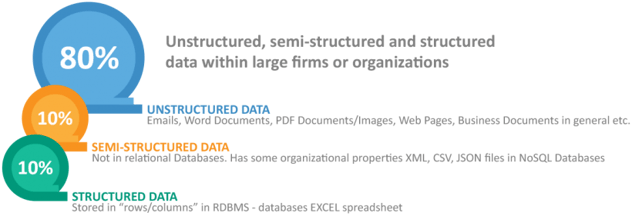Present Blog – IT Thought Leadership
Blog Present-IT thought leadership
Blog Present-IT thought leadership
IT thought leadership blog for CIOs and CTOs in Canada seeking resources to drive IT as a business contributor: hybrid cloud, infrastructure, managed services and security and IT recruitment.
3 pillars of your IT infrastructure that help create value-added data
present Technology in general and mobile technologies in particular are changing the way we view the world and act.
Technology in general and mobile technologies in particular are changing the way we view the world and act.
Just think of the drastic transformation within the movie rental industry to see how radical the change has been in the last 15 years. The time when the neighborhood store shopkeeper advised you of movies according to your tastes and desires is over. Today, while staying in your living room, it's Netflix that makes a selection on the screen for you based on your research and what you have previously watched.
New tools in the media world where technologies are essential have helped change what is shown to us, as can be seen in the following video.
Now, if one looks beyond the world of media, it is easy to see the possibilities of mobile computing and Big Data:
• Innovation focused on real needs;
- • More objective decision making;
- • Minimizing strategic risks;
- • Improved customer/user experience;
- • High speed availability;
- • Competitive gains;
- • Etc.
To take advantage of big data, companies must now think in terms of the information value chain. In this context, IT infrastructure is at the heart of considerations.
Here are 3 key points where the architecture and IT infrastructure make the difference.
1. Collecting data produced by a company
In 2014, we could generate, in 10 minutes, more data than what had been created between the birth of mankind and 2003! In this context, the management of the volume of data is a major challenge for businesses and their IT infrastructures.
It is safe to assume that the investments you made in the last 10 years probably did not take this dimension into account, and in this case, your infrastructure can be a weak link in your innovation strategy.
The essential components in your IT infrastructure must therefore manage to collect data from all touch points (website, internal and client mobile applications, connected objects, management systems, ERP, telephony, email ...).
2. Organize and analyse data
While about 15% of data is structured at present, it is in the total volume of information where lies the real value for businesses. The challenge is to organize the chaos within the data.

Hence, solutions that help the processing of unstructured data such as Isilon Systems should be integrated within the IT infrastructure. However, it is not currently possible to use 100% of the data collected. Nonetheless, the combination of structured data, semi-structured and some unstructured data provide sufficient volume to extract value.
3. Identify and extract the value added data
The production of value-added data through the creation of algorithms that process information, is a complex step because it must be determined in advance what kind of information you want to extract.
Although the infrastructure is essential to be able to run the algorithms, human input is critical to highlight points of information that allow you to generate value.
Conclusion
Before you can reap the benefits of big data, you need an IT infrastructure that supports the essential phases of the information value chain. While companies that are already advanced in their digital transformation can exploit the value of their data, they are still a minority.
It is only a matter of time before all businesses make the shift and those who wait are those who will have the most difficulty in adapting to the new model.
Request an assessment of your IT infrastructure for a full diagnostic of your systems.
About Blog
The right use of technology addresses business challenges and drives business growth in all areas of an enterprise. We hope this blog will offer insight into developing strategies and tactics to enable you to identify those key drivers of growth and keep pace with and anticipate the rapid technology change of today.
Posts by Topic
- IT infrastructure (116)
- IT security (92)
- IT Innovation (59)
- Trends (51)
- Cloud (47)
- Managed services (46)
- Mobility (38)
- Digital transformation (29)
- CIO/IT leaders (28)
- Events (28)
- News (23)
- Microsoft 365 (17)
- Security (17)
- IBM (16)
- Disaster recovery (DR) (14)
- High availability (12)
- Recruitment (12)
- Storage (12)
- Big Data (11)
- Collaboration (11)
- AI (9)
- Case study (9)
- Office 365 (9)
- BYOD (8)
- Customer Experience (8)
- Hybrid Cloud (7)
- Current events (6)
- SAP Hana (5)
- Business intelligence (BI) (4)
- Converged infrastructure (4)
- Convergence / Hyper-convergence (4)
- Virtualization (4)
- Copilot (3)
- Future of retail (2)
- Retail (2)
- trend (2)
- Backups (1)
- Beacon (1)
- Blog Migrations (1)
- Contests (1)
- Infrastructure TI (1)
- Innovation TI (1)
- IoT (1)
- MDM (1)
- Stockage (1)
- Virtualisation (1)
- blockchain (1)
- cio (1)
- replication (1)
- Étude de cas (1)


